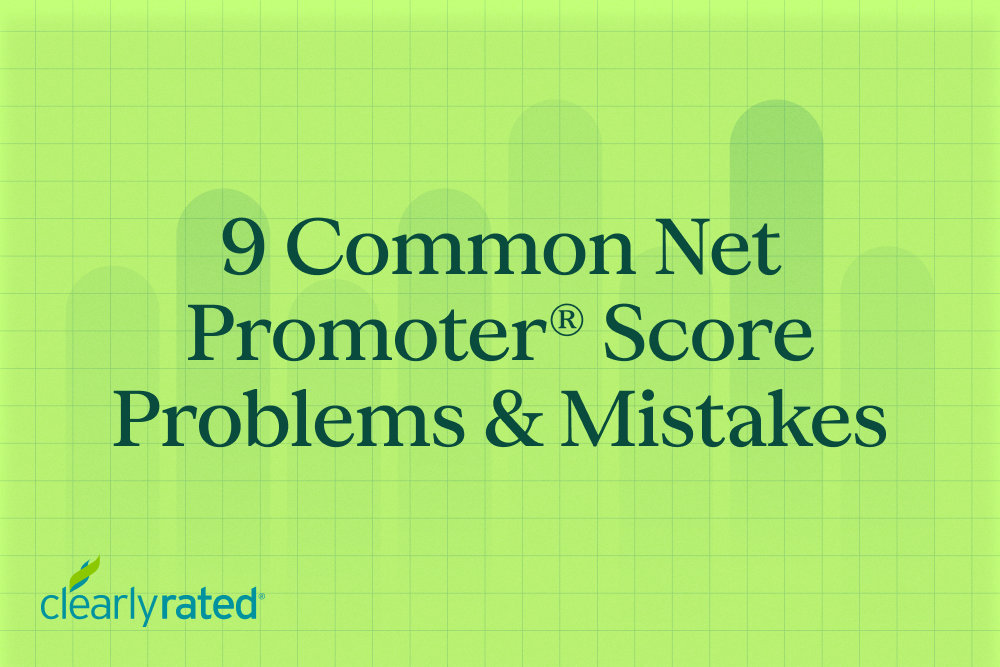NPS® 101 for B2B Service Providers


As B2B service provider, you strive to deliver great service to your clients. And in 2023, your clients have come to expect nothing short of an excellent experience with your company.But, what steps can you take to demonstrate your commitment to your clients and prospects? And how can you leverage the quality of the service you provide to improve reputation and accelerate growth of your organization?While there's no single answer to these questions, there are resources that your company can employ to harness client satisfaction for growth. One powerful resource is a single metric known as the Net Promoter® score, or “NPS®” for short.The concept was created by Fred Reichheld at Bain & Company and Satmetrix, and was later introduced as the Net Promoter® Score methodology in 2003 when Fred published an article in the Harvard Business Review - 'The One Number You Need to Grow'.
What is NPS? A primer for B2B service providers
Even if you're not familiar with the concept of NPS, you've likely participated in an NPS survey.The NPS survey methodology asks your clients how likely they are to recommend your service to a friend or colleague using a numeric scale of 0 - 10, ten being extremely likely and zero being not likely at all. (Sound familiar?)The true power of the NPS methodology lies in reporting. To calculate NPS, responses to the survey question are divided into three categories:
- Promoters (9-10): Your most loyal, enthusiastic fans. These clients are highly satisfied with your services and are loyal to your company. Promoters represent your strongest allies and are most likely to promote your service to their networks.
- Passives (7-8): These clients are happy (for now) but demonstrate an indifference to their experience with your company, and may be tempted by competitors. While not as immediately concerning as detractors, these clients represent a risk to retention and service reputation. Put frankly, they cannot be expected to be loyal to your company or promote your services to their own networks.
- Detractors (0-6): Your most at-risk group of clients. Not only are you at risk of losing the business of detractors, they are also the most likely to share negative feedback to their networks regarding their experience with you.
Your service's NPS "score" is calculated by subtracting the percentage of detractors from the percentage of promoters. By way of example, ClearlyRated's lifetime NPS score is 84%, which is derived from the 86% of promoters across our company survey history minus the 2% of detractors across our company survey history.86% - 2% = 84% NPS. Easy peasy.
What is a 'good' NPS score for B2B service providers?
When it comes to NPS, you have a few options for determining what constitutes a "good" score for your service.
- Look at global NPS standards - which categorize 50% NPS as "excellent" and 70% NPS as "world-class."
- Compare your organization's NPS against competitors' scores. In 2024, B2B service providers across industries averaged an NPS score of 45%.
- Look to service leaders across industries. The chart below shows published NPS scores for brands across industries. You can begin to see how clients of recognizable service leaders like Nordstrom rate their company (75% NPS) versus, say, Comcast - a notorious service laggard - who received a score of -25%.

Why does NPS work?
- It's simple. Because it's a single metric, NPS is easy to measure, track over time, and use to benchmark your company's client satisfaction and service quality against the rest of the industry.
- NPS is a data-driven approach relying on insights directly from the client. The concise format of the survey allows you to focus in on the information that really matters while taking the guess-work out of assessing how your clients feel about you.
- Time is everything (it's short!). People tend to turn and run when they see long surveys. And as much as your clients are ready and willing to provide you with feedback - they are protective of their time.
- It promotes transparency. By quantifying intangible concepts like client satisfaction and service quality, NPS provides technology service providers with a singular metric to weigh performance, set improvement goals, and to rally the team around. When everyone in the organization has a clear understanding of how their behavior can inform NPS, they'll begin to obsess over client satisfaction and service quality as a practice and a philosophy.
Next Steps with NPS
- Ready to get started with NPS? Contact the ClearlyRated team for insights, best practices, and a tour of our survey platform (designed specifically to support professional services firms).
- Interested in additional data? View current NPS benchmarks for B2B service providers.

.png)




















%20in%20the%20Workplace.png)










.png)

%20and%20how%20can%20you%20increase%20it.png)
_%20A%20Step-by-Step%20Guide.png)

.png)
.png)




_.png)



%20in%202028.png)


_%20The%20Ultimate%20Guide%20(2024).png)


































